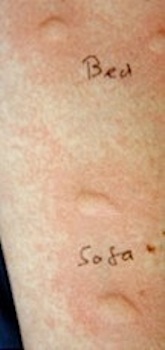Skin Prick Testing: Diagnostic Tool for Allergy Sensitization and Disease Confirmation
A skin prick test is a safe method of introducing a small amount of allergen into the body in order to measure the strength of any allergic reaction. Timing for reactions can start 5 minutes after the test and peak about 30 minutes later. Skin prick testing can help confirm the diagnosis of an allergic disease.
Any red mark or 'wheal' is then measured and recorded. Advice on how best to avoid the trigger is then given by the clinician.

These tests are simple, cost effective, and quick to perform and yield valuable information when combined with the patient's medical history and a clinical examination. They should include a minimum of four common allergens which may vary according to geographical regions. Testing should not be performed in the presence of severe eczema or if the patient is receiving antihistamine, or the readings will not be accurate. Skin prick tests are especially valuable for children with suspected allergy.
There are some patients however who can skin prick test positive for a specific allergen but have no clinical symptoms to that trigger. They would be considered allergen 'tolerant' to the trigger and avoidance advice may not be appropriate. On the other hand, there are a few patients who may be at risk of a serious allergic reaction to a trigger but demonstrate no outward reaction in common allergy testing. In all cases, allergy testing needs to be a clinical procedure by trained clinicians.
References
- Skin Prick Testing in Clinical Practice, 'The cornerstone in Allergy Diagnosis', Mary J. Brydon, 2000, Published by NADAAS, ISBN 0-9537646-0-5
- 'Risk Assessment in anaphylaxis: Current and future approaches', F. Estelle R. Simons, MD et al, 2007, 'J Allergy Clin Immunol', Vol. 120, Number 1: p S2-S24